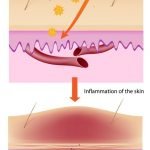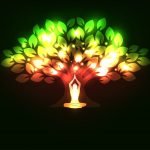Homeopathic Treatment of Chronic PTSD
Tim Shannon, ND
Post-traumatic stress disorder (PTSD) is an anxiety disorder that can develop after exposure to a terrifying event or ordeal in which grave physical harm occurred or was threatened. In addition, more and more cases demonstrate that severe emotional trauma without physical harm can show the same symptoms/themes. Traumatic events that may trigger PTSD include violent personal assaults, natural- or human-caused disasters, accidents or military combat.
People with PTSD can have persistent frightening thoughts and memories of their ordeal. They may experience sleep problems, feel detached or numb, or be easily startled. Symptoms usually begin within 3 months of the incident or emerge years afterward, and must last for more than a month to be considered PTSD. The course of the disorder varies; some people recover within 6 months, while others have symptoms that become chronic.
Main themes to help consider PTSD as the primary diagnosis include:
- Escape (e.g., unconsciousness, numbness, disassociation)
- Hyper-vigilance (e.g., suspiciousness, insomnia, hypersensitivity to noise)
- Excessive defensiveness (e.g., rage, promiscuity, pushing others away)
- Stuck in the past (e.g., flashbacks, recurring nightmares, brooding on past)
Treatment options for PTSD include cognitive-behavioral therapy (CBT), dialectical behavioral therapy (DBT) and eye movement desensitization and reprocessing (EMDR). Of course, there are a number of conventional drugs used for PTSD as well.
Case Study
“Philip” was 35 years old at the initial intake. His abuse and trauma occurred between the ages of 6 and 8. He was finally adopted into a loving home at age 8. He was referred to me by his adopted mother, a therapist, who came to a local talk I had done on PTSD. Philip is African-American, thin and well-built.
He had been moved from foster home to foster home as a young boy. At one of those homes in particular, he was frequently abused in a variety of ways. Much of the abuse came from an older boy. He related the following forms of chronic abuse:
- Stuffed in a box and kicked down stairs
- Held over a railing and dropped to the floor below
- Stuffed in a dryer that was then turned on
- Head held under water while taking a bath
- Sexually molested by a variety of older kids
- Locked in closets
- Jabbed by needles
- Beaten regularly by older kids
Philip worked for a utility company doing menial repairs at various sites throughout the city. A major part of his job was to drive to work sites to perform repairs. Unfortunately, due to dyslexia and poor concentration, he would often find himself driving to the wrong side of town or misreading work orders, and making a variety of mistakes. This caused him a great deal of distress and frustration, as well as created ongoing tension with his boss.
He was mild-mannered and soft-spoken. He paused frequently, sometimes for long moments. He often looked like he was struggling to form thoughts, often putting his hand to his forehead and furrowing his brow. In addition, throughout treatment, especially in the beginning, he often would struggle with basic concepts. His presentation was somewhat scattered. I found it necessary at times to focus him with a variety of prompts.
At one point during the initial intake, Philip related how he felt knowing that his mother had put him up for adoption. He spoke of the feeling of being among other young children, not knowing where his parents were, where his real siblings were – if any. The idea of being abandoned and put up for adoption was a deep wound for him.
Philip spoke of a constant dwelling on the past that ruled his life: “There is just a side of me missing … out of everything, this emptiness inside is pretty much it … I tend to go over my life, over and over and over. It drives me up the wall. … gets to a point where I’m unable to function. They are not pleasant thoughts, [but] thoughts of ‘poor me – why was I treated this way? Why can’t I read like everyone else? Why does my reading come in strong on some days, and not on others?’ Vision comes in and out; some days really straining.”
“I do a lot of talking to myself, [e.g.,] ‘god, this is just not right.’ Everything I see always goes back to this foster home where I was abused.”
Philip experienced extreme difficulty concentrating on a daily basis, which would last for most of the day and impacted his ability to function at work: “I find myself really struggling trying to read my work orders. My memory has definitely faded … My concentration is totally shot, I get up to do something, then think, ‘What am I doing? What did I get up to do?’ I have dyslexia. Sometimes I’m driving and find myself on the wrong road. It is almost like a blackout. … Or forgetting to pick things up … All my thoughts go back to my past history.”
Philip also talked of internal anger: “There is definitely a rage in me … a big, huge rage that is building up. ‘Why am I in this situation?’ I don’t want this feeling. Have to keep my mouth shut, so I just sit back or I’ll overreact.” He talked of wanting to go back in time and beat up those who had abused him. He felt contained, however, and reported that his anger “doesn’t show up … Where it shows up is me going off by myself and just crying. For it to come out, it’s like I’d end up losing myself.” Occasionally he found himself feeling “angry for no apparent reason.”
Philip experienced 4-6 severe headaches a month, which seemed related to periods where he was markedly consumed with thoughts of his past abuse. He described them: “I get pounding headaches, seems like they go right into the nervous system.” Philip reported having low back pain when under extreme stress, which had recently moved up into his neck. He had several phobias: nyctophobia, hydrophobia, claustrophobia and acrophobia. Most of his phobias related to abuses he experienced as a child. Philip was constantly restless, “like I’ve got to do something, got to be moving.” He also experienced difficulty staying asleep and incessant nail biting, especially when stressed.
His adoptive mother noted: “He had a lot of anger as a youth. My husband used to say it was like a helium balloon, you had to pull the string down. He’d numb out, like he was floating someplace else. Like, he’d be in a conversation, he’d get up and be gone, no ‘good-bye.’ He was out of his seat, extremely hyper in school, too: In a 20-minute period, out of his seat 11 times. Bed-wetting from at least 7th grade ’til junior high or eighth grade.”
Philip and I created a baseline of symptoms/issues to monitor for change:
- Lack of concentration: mostly all day
- Dwelling on the past: daily affair
- Headaches: 4-6 in a month
- Depression: sad, want to cry – almost daily
- Phobias: claustrophobic in the back seat of cars
- Anger: once a week outburst
- Isolating: avoid friends – daily affair
- Physical restlessness
- Nail biting: daily
Case Analysis
Many characteristics of this patient suggested a medicine derived from a nightshade.
Common to NNightshade, Beightshades:
- The unknown (fears of water, the dark)
- Congestion (pounding headache)
- Rage/violence/suddenness and control (trying to control the dark side)
- Unconsciousness (suppress/split off/or push things into the unconscious)
- Persecution (a person/ghosts/monsters – attacking, harming, devouring them)
Everyone has difficulty with trauma. However, we all try to compensate and integrate trauma in different ways. PTSD is typically a scenario where the patient has been unable to integrate what happened in the past.
In Philip’s case, I thought his system was suppressing what had happened to him. This was evident in a recurring dream he related: “I’m walking in these woods, coming out from behind two trees. There is this voice that is calling; [I] want to turn around, but for some reason don’t. It is pitch black on one half of the scene, and on the other half are the trees and the house where I grew up – they are in normal daylight. I can’ t make out the voice. I’m heading towards the dark – the voice, but feel like somehow I’m losing myself. Then I thought I should head back to the daylight. Then I’d wake up, panicked, sweating, heart racing out of my chest. I used to get that dream all the time, a face that was always chasing me. It happened after being adopted.”
Typical for nightshade patients is that they put feelings, unpleasantness into the unconscious, into the “dark” side. Often, what is hidden in the dark is something scary, something unknown. In addition, what is pushed into the dark often begins to show up as something fearful, something that can harm them.
In addition, Philip had headaches that were congestive and pounding, and they were worse by light, which is another typical symptom pattern for nightshade patients.
The main differential is Belladonna, Hyoscyamus, Stramonium, Mandragora, Solanum nigrum and Datura arborea. I thought Philip needed Stramonium, because he was more explicit about the feeling of abandonment. He also talked about the sensation of being split – something more common for Stramonium patients. He also had a more “scattered” presentation, which I’ve seen more commonly in Stramonium. Lastly, in most of my adult Stramonium cases, they are more pleasant in general. There were several other factors that weighed against the other nightshades in the differential, so he was given two doses of Stram 1M to be taken 12 hours apart.
One month after his initial visit, Philip’s sleep had improved, he did not experience any headaches that month, and the daily dwelling on the past had disappeared. He reported that his feeling of wanting to cry every day was no longer there. His physical restlessness was still present, but had decreased in intensity. Philip reported that his other symptoms were unchanged. Given he was showing improvement but needed help with additional symptoms, I prescribed 200c (in a 1oz dropper) once a week.
Three months later, he said that his concentration was, “definitely right on point. Definitely more on focus … Anxiety is much better than it was. Nervousness is not there anymore, not as much. I’m not replaying anything in my mind anymore. I’m just dealing with everything that is in front of me.”
He reported no change in his nail biting habit and that the feelings of sadness had returned, although dwelling on the past was “done, not anymore.” He had not experienced any headaches except for a brief period when he had a cold. His claustrophobia and restlessness seemed to be gone, and he felt that his anger and isolationist behavior was better.
I continued to see Philip for a year and a half, during which time his sleep, headaches and depressed feelings showed marked improvement, with occasional setbacks. Often, setbacks correlated with stressful events in his life or witnessing natural disasters (such as hurricane Katrina) on TV. Each time, however, he was given more Stram, and responded positively. All his other symptoms progressively improved except for the nail biting, which persisted.
At our last visit, all his symptoms were either entirely gone or so markedly improved that he was not concerned; the only unchanged symptom was nail biting. I suggested we end formal treatment. He agreed to resume treatment from his own volition should the need arise again.
 Tim Shannon, ND is in private practice in Portland. He specializes in the treatment of mental, emotional and behavioral health. He uses classical homeopathy to treat a wide range of mental health complaints: ADHD, OCD, PMS, autistic spectrum, depression, anxiety, eating disorders, PTSD, bi-polar, schizophrenia, etc. Dr. Shannon lectures at NCNM as well as to the local community on a variety of mental health complaints.
Tim Shannon, ND is in private practice in Portland. He specializes in the treatment of mental, emotional and behavioral health. He uses classical homeopathy to treat a wide range of mental health complaints: ADHD, OCD, PMS, autistic spectrum, depression, anxiety, eating disorders, PTSD, bi-polar, schizophrenia, etc. Dr. Shannon lectures at NCNM as well as to the local community on a variety of mental health complaints.









